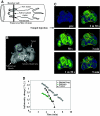Radioprotectors and mitigators of radiation-induced normal tissue injury
- PMID: 20413641
- PMCID: PMC3076305
- DOI: 10.1634/theoncologist.2009-S104
Radioprotectors and mitigators of radiation-induced normal tissue injury
Abstract
Radiation is used in the treatment of a broad range of malignancies. Exposure of normal tissue to radiation may result in both acute and chronic toxicities that can result in an inability to deliver the intended therapy, a range of symptoms, and a decrease in quality of life. Radioprotectors are compounds that are designed to reduce the damage in normal tissues caused by radiation. These compounds are often antioxidants and must be present before or at the time of radiation for effectiveness. Other agents, termed mitigators, may be used to minimize toxicity even after radiation has been delivered. Herein, we review agents in clinical use or in development as radioprotectors and mitigators of radiation-induced normal tissue injury. Few agents are approved for clinical use, but many new compounds show promising results in preclinical testing.
Conflict of interest statement
The content of this article has been reviewed by independent peer reviewers to ensure that it is balanced, objective, and free from commercial bias. No financial relationships relevant to the content of this article have been disclosed by the authors or independent peer reviewers.
Figures




References
-
- Ringborg U, Bergqvist D, Brorsson B, et al. The Swedish Council on Technology Assessment in Health Care (SBU) systematic overview of radiotherapy for cancer including a prospective survey of radiotherapy practice in Sweden 2001—summary and conclusions. Acta Oncol. 2003;42:357–365. - PubMed
-
- Stone HB, Moulder JE, Coleman CN, et al. Models for evaluating agents intended for the prophylaxis, mitigation and treatment of radiation injuries. Report of an NCI Workshop, December 3–4, 2003. Radiat Res. 2004;162:711–728. - PubMed
-
- Hall EJ, Giaccia AJ. Radiobiology for the Radiologist. Sixth Edition. Philadelphia: Lippincott Williams & Wilkins; 2006. pp. 5–15.
-
- von Sonntag C. The Chemical Basis of Radiation Biology. London: Taylor & Francis; 1987. pp. 31–56.
-
- Xavier S, Yamada K, Samuni AM, et al. Differential protection by nitroxides and hydroxylamines to radiation-induced and metal ion-catalyzed oxidative damage. Biochim Biophys Acta. 2002;1573:109–120. - PubMed
Publication types
MeSH terms
Substances
Grants and funding
LinkOut - more resources
Full Text Sources
Other Literature Sources
Medical

